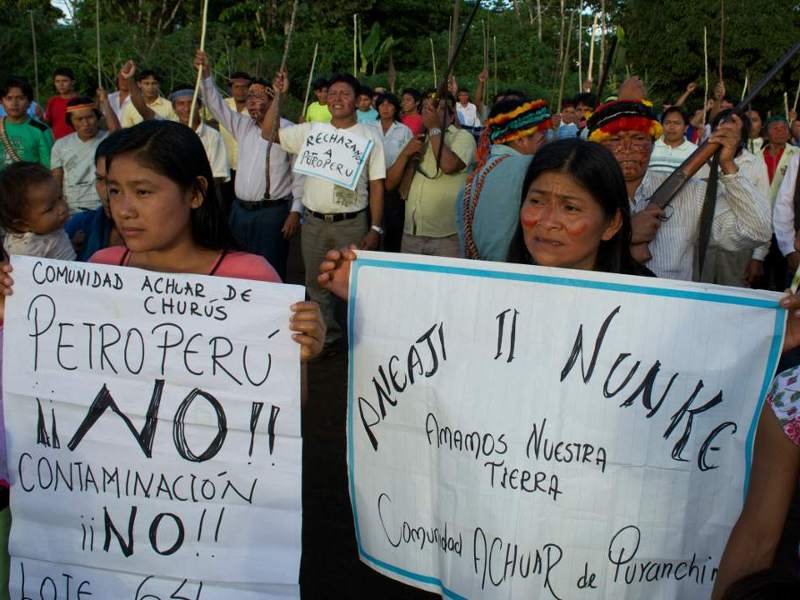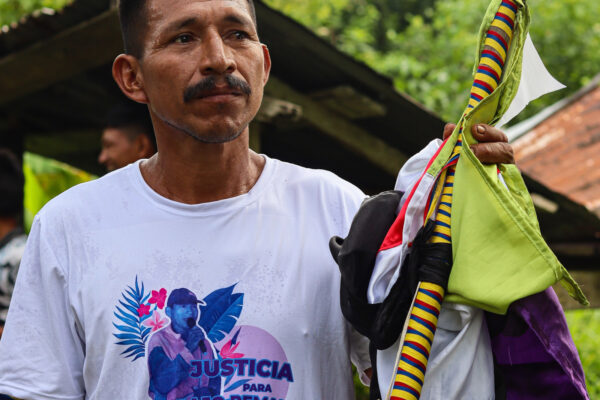
Excerpted from Amazon in Focus 2016
After five lackluster years under President Ollanta Humala, Peru is facing a new political scenario with the ascension of Pedro Pablo Kuczynski, known as PPK, to the presidency. From an indigenous rights perspective, the prior presidency was an improvement over the disaster that was Alan García, but still deeply disappointing. Following a promising start with the promulgation of the Prior Consultation Law, the situation deteriorated with poor implementation of the law, ongoing socio-enviro conflicts (150 registered by the Human Rights Ombudsman as of July 2016, up from 138 one year prior) especially around big mining projects in the Andean highlands, and weakening of environmental regulations.
The new president is best described as a neoliberal technocrat. He is expected to further reduce regulations and government oversight of extractive industries and encourage greater private sector investment. Initial indications are that mining will continue to be seen as a primary motor for generating revenue and economic growth.
Here are some of the flashpoints Amazon Watch will be monitoring in the coming months and years:
Amazon oil extraction
Government plans to expand oil and gas exploration throughout the Amazon were foiled in recent years by crashing oil prices. Seven concessions tendered in late 2014 are still listed as available for licitation, according to oil licensing agency PeruPetro. Exploration plans in Block 64, where Achuar indigenous peoples have fiercely resisted oil activities, have been in suspension. This could all change, assuming renewed efforts by the new government and rising oil prices.
2016 has seen at least six Amazon oil spills along the Northern Peruvian Pipeline, with a lackluster government response to mitigate the spill’s environmental health impacts. Extraordinarily, the last three happened after the pipeline had been ostensibly shut down.
Indigenous land titling
Some 20% of the Peruvian Amazon – roughly 14 million hectares – has been titled to indigenous peoples. According to the national indigenous federation Aidesep, an additional 20 million hectares are pending for government recognition. A sustained campaign, dating back more than five years, has yielded important international funding and advances on this front. A very important pilot case is that of the Achuar of the Pastaza River basin, who have the most well-developed proposal and are pushing it within the Peruvian court system with the support of Peruvian human rights lawyers and international allies like Rainforest Foundation Norway and Amazon Watch.
How far the incoming government will take this very much remains to be seen. Prior to taking his powerful position as Minister of Economy, Alfredo Thorne made concerning public statements regarding privatizing collective territories (precisely the issue that let to indigenous protests in 2008, culminating in the so-called Baguazo in 2009.
Socio-environmental conflicts
In their July 2016 report, Peru’s Human Rights Ombudsman listed 211 social conflicts across the country, over 70% of which are socio-environmental conflicts like community protests over large-scale mining projects. This is the context in which many protesters are wounded and, in some cases, killed by security forces. Related to that are the ongoing killings of environmental defenders and indigenous leaders. According to Global Witness, some twelve deaths were documented in 2015, keeping Peru in the notorious five worst countries in the world to be an environmental activist. Beyond that, indigenous leaders continue to face criminalization for their activism, as illustrated by the case against 54 related to the tragic violence in Bagua. Even if they are absolved, the movement has been sapped by years of hearings while the true responsible parties for creating the conditions that led to the deadly clashes – politicians and corporations – remain at large. [Note: this report was published before the Baguazo verdicts were delivered. Read the Amazon Watch statement on the verdicts here.]
These are but several of the key dynamics at play in the Peruvian Amazon. There are also a whole host of other threats to both the environment and the well-being of those who live there, including mining, logging, coca production, cattle ranching, the expansion of oil palm plantations and even cacao for chocolate. As such, we can expect the situation of indigenous rights in the Peruvian Amazon to remain precarious into the foreseeable future. The indigenous movement itself continues to be the key defense against further violations and the main hope for the crucial advances we would all like to see.













